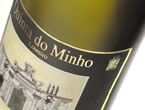At last, Portuguese week sees the light ... finalmente
 There have been so many wines from Portugal I've tasted during Portuguese week that it now seems clear to me: Five days devoted to posting on this country's many different wine producing regions just isn't enough. There's Estremadura, which, like Ribatejo, is transforming itself by adding modern vinification techniques and looking beyond the production of bulk wine. There's Dão, the region that approaches the Douro from the south. There's Bairrada, similar to Alentejo: yet another burgeoning wine region. And I have overlooked so many other corners of the country where winemakers have their own thing going on. I wish I had time to post on them too. But I hope to visit the Iberian Peninsula in person to truly understand more about Portuguese wines. Until that time, there's the Internet and there's the local wine merchant.
There have been so many wines from Portugal I've tasted during Portuguese week that it now seems clear to me: Five days devoted to posting on this country's many different wine producing regions just isn't enough. There's Estremadura, which, like Ribatejo, is transforming itself by adding modern vinification techniques and looking beyond the production of bulk wine. There's Dão, the region that approaches the Douro from the south. There's Bairrada, similar to Alentejo: yet another burgeoning wine region. And I have overlooked so many other corners of the country where winemakers have their own thing going on. I wish I had time to post on them too. But I hope to visit the Iberian Peninsula in person to truly understand more about Portuguese wines. Until that time, there's the Internet and there's the local wine merchant.
Portuguese theme week here at Doutor Golb do vinho ends up in the northern DOC appellation of Vinho Verde. I call it the light at the end of tunnel. This is a suitable metaphor for the future of Vinho Verde. When it comes to Portugal, wine buyers have been tunnelling through the tintos and never get through to see what the entire country has to offer. Yes, white wines do exist. This situation obviously stems from the fact that white wines throughout Portugal have been backward and isolationist for years, perhaps more so than any European wine product. On top of that Vinho Verde, in the northwest area that borders Spain's Galicia, is frequently misinterpreted, often connoting unripe, bitter and "green" white wines (when in reality Vinho Verde is the official label for whites as well as any other colour of wine coming out of the region -- though these examples rarely do make it out).
The Vinho Verde appellation name actually comes from the exceptionally moist ecosystem that endows this maritime region with sprawling lush greenness. It's true. And here are some other great things about today's Vinho Verde. Like German wines, they are made from grapes that yield low sugar content which promotes light, refreshing wines that are low in alcohol but still maintain a fine balance of fruit and acid. Vinho Verde vineyards account for about 15% of Portugal's total, and of all, it's these grapes that have the richest soil, humidest climate and breeziest exposure to the Atlantic. The land has been producing wine since ancient times and its grapes are said to be diuretic and aid in digestion. The grapes are: lvarinho, Arinto (or Pedernã), Avesso, Azal, Loureiro, and Trajadura. Aromatic and grassy by nature, Loureiro is at the head of this class.
Often said to possess laurel notes, the varietal we tried last night was lightly herby. Quinta do Minho Loureiro 2004 was also wheaty, beery and slightly effervescent. Its finish was virtually non-wine like. Almost like a cider or a lager, with its raspy, fresh and clean dryness on the palate. Minerals and some pepper noted too.
I'd open it with some of the $0.89 tins of sardines I feasted on during the week. Or with Asian cuisine. Or simply on its own.







No comments:
Post a Comment